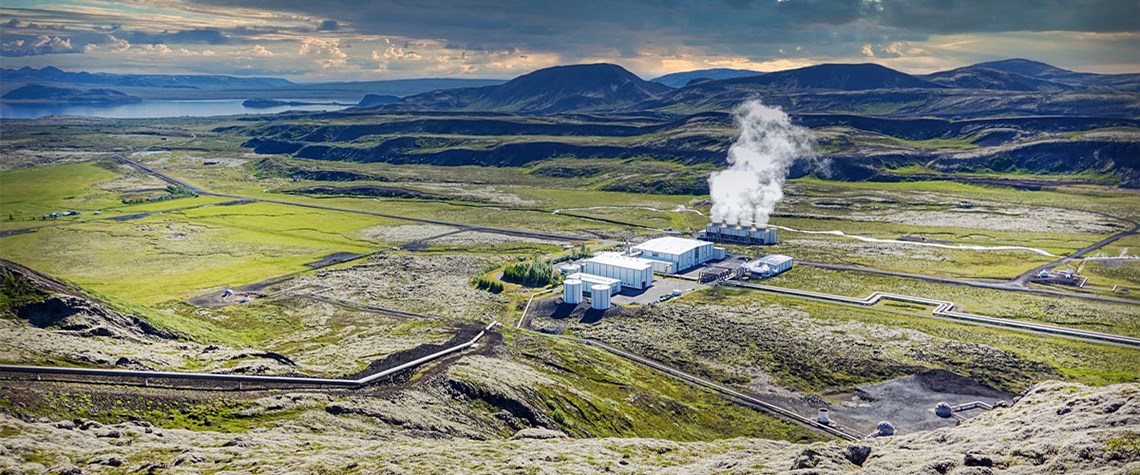As the world struggles to balance energy security, affordability and emissions reductions, all potential energy sources are coming into sharper focus, including geothermal, a hugely undervalued resource.
The IEA expects geothermal power generation to rise to up to 857TWh by 2050—an 800pc increase compared with the 94TWh generated in 2020. And, according to consultancy Rystad Energy, geothermal investment is expected to reach $85bn between 2020 and 2030.
Geothermal energy, which comes from the Earth’s interior, is versatile and can be used in a variety of ways, including heating and cooling, as well as the generation of clean electricity. The European Commission has estimated that 25pc of the European population could cost-effectively deploy geothermal heating, with the potential for approximately 10pc of Europe’s power to come from geothermal plants.
Geothermal is also accessible everywhere in the world and, unlike other renewable energy sources, supply is not affected by the weather or the time of day. This consistency makes it ideal as a baseload or an on-demand source.
Crucially, geothermal can provide enduring domestic energy security in industrial, agricultural, commercial or domestic settings, significantly reducing reliance on imported sources of power. Electricity can be fed into the grid or used for green hydrogen generation and heat can be distributed via district heating networks or pipes to end-users. Its carbon footprint is close to zero, and its surface impact is limited.
While geothermal energy can be theoretically captured anywhere in the world, it may not necessarily be the lowest levelised cost of energy (LCOE) renewable energy source in every location. However, it can be competitive, and its reliability means it has a role as part of an integrated low-carbon energy solution alongside wind, solar, wave, hydrogen and battery storage.
Harvested for centuries, geothermal’s uptake has been limited so far to the most prospective places, often those with active volcanic areas such as Iceland, the western US, Indonesia and eastern Africa. The main reason is the initial exploration risk and development cost. Until there is exploratory drilling, it can be difficult to gauge how viable a particular resource will be, and substantial upfront capital costs mean it can take numerous years to recoup that investment.
However, new technological developments, such as closed-loop systems, are constantly improving, which may drive down the LCOE further and help increase global geothermal usage. As technological developments become more efficient, there is also the potential for a paradigm shift on the drilling side, with companies significantly reducing costs and being able to unlock areas previously considered unachievable.
Reusing depleted oil and gas wells to capture geothermal heat is also being considered. With capital already having been sunk—literally—into the wells, extracting geothermal energy becomes more financially attractive, increasing the potential to drive down costs.
The economics of geothermal can also be enhanced through the recovery of valuable associated metals, as the potential to use geothermal projects for critical minerals extraction also makes the capex costs more palatable for potential investors. Testing is ongoing to determine if geothermal technologies can be used to commercially unlock vast reserves of lithium (a vital component for electric car batteries) contained in mineral-rich hot brines. If a way can be found to extract the lithium in a cost-effective manner, it would reverse the world’s dependence on imported lithium from countries such as China, the current global leader in the production of lithium batteries.
Once geothermal energy comes online, the balance changes. After the initial investment, it is relatively low cost to operate a geothermal plant, which can run for 30–50 years or more. Moreover, when considering the range and scope of externalities associated with electricity generation across a broad range of fossil and renewable energy sources, geothermal has the lowest external social cost.
Governments have an important role to play to stimulate the growth of geothermal energy. An increasing number of countries are encouraging developments through initiatives such as upfront subsidies or minimum offtake pricing. There is an additional need for clear, transparent and stable regulations to help informed investment decisions.
The positive impact of new regulations can be seen in countries such as Germany and the Netherlands, where geothermal developments are progressing despite not necessarily having the most obvious subsurface setting.
The IEA anticipates that faster deployment of renewables and efficiency improvements in the EU will bring down natural gas and oil demand by 20pc this decade. However, there is an increased urgency to seek out and deploy new energy sources beyond Russian gas as the world needs affordable, environmentally sustainable and reliable energy.
Geothermal energy can and should be considered in the overall energy mix required for decarbonisation, given its wide availability and capacity to deliver baseload energy. In a changing world battling with energy security and the race to net zero, it makes perfect sense to increase efforts and global policies to realise the geothermal prize.
Jonathan Copus is CEO of Getech, which applies its geoscience data and unique geospatial software products to accelerate the energy transition by locating, developing and operating geoenergy and green hydrogen projects.
This article is part of the upcoming special report Outlook 2023, which features expectations from the energy industry for key trends in the year ahead. Sign up here to receive updates about the full report.








Comments